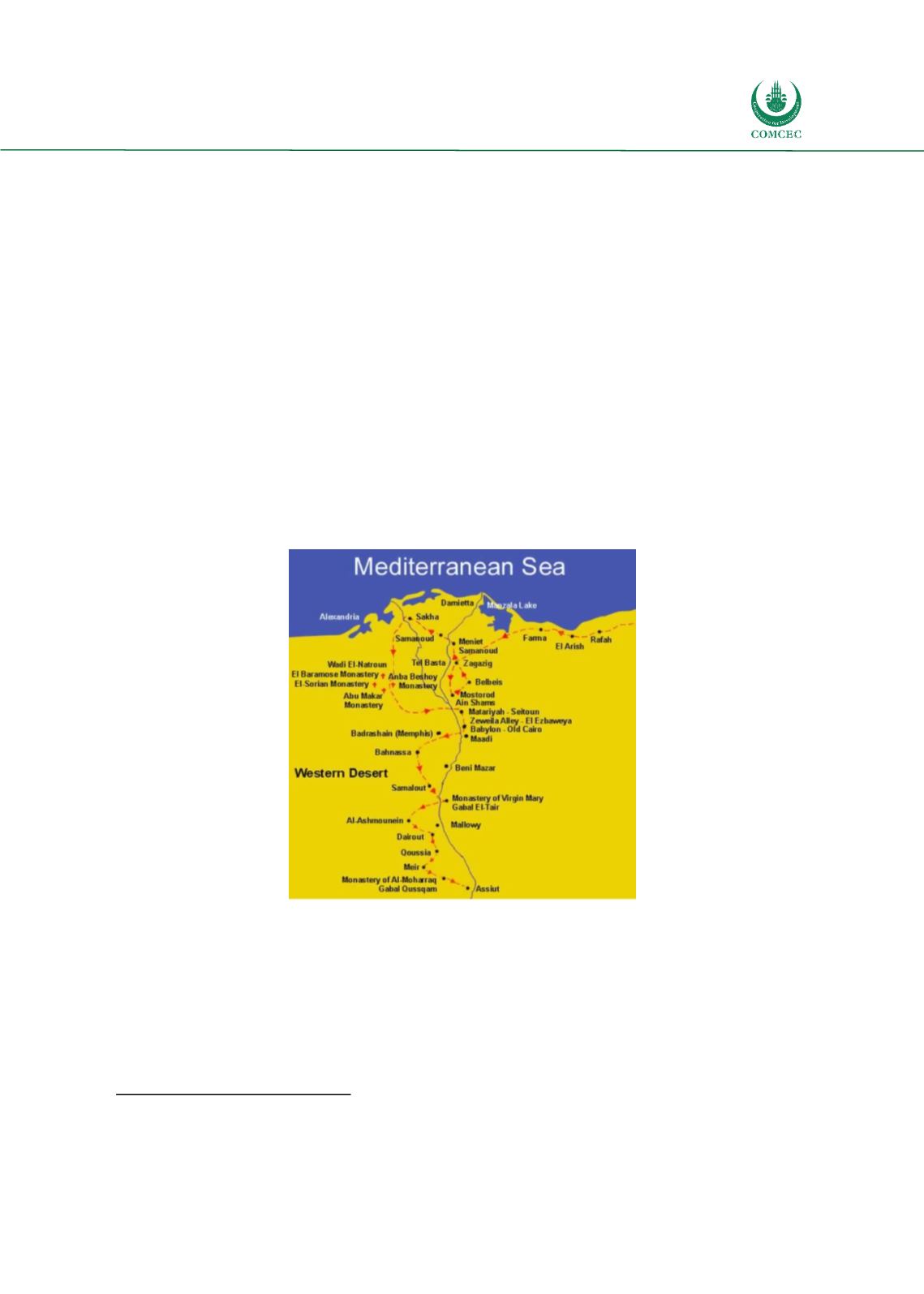

Sustainable Destination Management
Strategies in the OIC Member Countries
147
3.2.2.
The Holy Family Tourism Corridor
Background
“Religious tourism is a key agent of peace. It is a transformative force that breaks down cultural
barriers and builds bridges between people, communities, and nations. Leveraging the growing
interest in religious tourism is crucial in building cultural dialogue, mutual understanding, and
peace.
”
540
The Holy Family TC spans three countries: Egypt, Jordan, and Palestine. Egypt started focusing
on the holy corridor in the early 1990s. The Holy Family TC received more extensive attention
after 2016, with the Pope's recognition of the Holy Family sites in Egypt for Catholic pilgrimage.
According to the Ministry of Tourism in Egypt, the Holy Family went through 25 sites, listed as
follows: Rafah, Al-Arish, Al-Farama, Tal Basta, Mostorod, Bilbeis, Samanoud, Sakha, Burullus,
Wadi al-Natrun, Al-Matarah, Ain Shams, Ancient Egypt, Maadi, Deir al-Jarnous (Al-Badrasheen),
Al-Bahnasa, Ben-Mazar, Samalut, Jabal Al-Tair, Ashmunin, Dairut, Al-Qoussah, Qarya Mir, Jabal
Qesqam (Deir Al Muharraq), and Dernka Mountain.
541
Figure 42: Holy Family Sites in Egypt
Source: Egyptian Ministry of Tourism
In Palestine, from Jerusalem to Bethlehem, and Nazareth to the Sea of Galilee and Capernaum,
there are many important Christian sites,
including the occupied territories. However, due to
the political situation in the region, there were severe limitations on travelers visiting various
sites, depending on their nationalities and the site locations. Egyptian Christians were also
restricted from visiting the occupied territories. However, this restriction has been lifted in
recent years, with Egyptian authorities permitting elderly people to go on pilgrimage.
540
Rifai, T. (2007). UNWTO Secretary-General. Paper presented at the Accessible Tourism for All”, taking into consideration
the UN Convention on the Rights
of
Persons with Disabilities.
541
Egyptian Ministry of TourismWebsite.
















